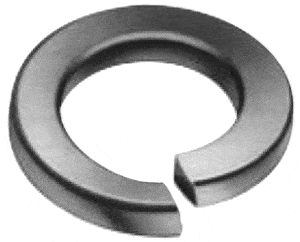I'm gathering the stuff to put my battery bank together. I've got the 280 AH LiFePO4 cells sold through @Michael B Caro, and that includes enough tinned copper bussbars to almost cover all the connections if I double them up (I need to double them up so I get enough amperage). The right-angle bussbar will be made of copper bar I ordered.
The stainless nuts and bolts included with the kit are too short for me to feel confident using them with doubled-up bussbars. And it seems the consensus is that the best way to DIY this is to insert a grub screw (aka "set screw") into the battery terminals, attach the screw with loctite or something similar, and then bolt down the bussbars over the set screw. In other words, I'd use a set screw instead of a regular hex bolt or whatever.
So far so good. But now enters galvanic corrosion, and the prescribed solutions seem to depend on a) how wet and how salty the environment is b) how long one expects the battery to last and c) how well the temperature will be controlled in the battery housing. And I haven't seen any explicit explanation for my situation. Which is:
a) not salty (not a marine application) and not wet (will mostly be in dry environments),
b) hoping for a lifespan of 15-20 years or so (in other words I might not use the battery every day, think "RV")
c) very little temperature stability (no air conditioning and minimal use of a heater)
So. Generally speaking I'm under the impression that I could either use aluminum or stainless steel grub screws, and aluminum or stainless steel washers and nuts for that screw. And I'm under the impression that in either case I should first clean off the surface of the aluminum battery terminals with maybe a nail file and then apply...shit, I can't see what I ordered, but I think it was Ox-Gard. And I gather I should re-apply the ox-gard on at least the battery terminals every six months or so.
But what I'm not clear on is whether I should be using aluminum or stainless steel grub screws / nuts / washers / lock washers. Would stainless grub screws attached with red loctite corrode the aluminum inside the terminals in that 15-20 year period?
Thanks!
The stainless nuts and bolts included with the kit are too short for me to feel confident using them with doubled-up bussbars. And it seems the consensus is that the best way to DIY this is to insert a grub screw (aka "set screw") into the battery terminals, attach the screw with loctite or something similar, and then bolt down the bussbars over the set screw. In other words, I'd use a set screw instead of a regular hex bolt or whatever.
So far so good. But now enters galvanic corrosion, and the prescribed solutions seem to depend on a) how wet and how salty the environment is b) how long one expects the battery to last and c) how well the temperature will be controlled in the battery housing. And I haven't seen any explicit explanation for my situation. Which is:
a) not salty (not a marine application) and not wet (will mostly be in dry environments),
b) hoping for a lifespan of 15-20 years or so (in other words I might not use the battery every day, think "RV")
c) very little temperature stability (no air conditioning and minimal use of a heater)
So. Generally speaking I'm under the impression that I could either use aluminum or stainless steel grub screws, and aluminum or stainless steel washers and nuts for that screw. And I'm under the impression that in either case I should first clean off the surface of the aluminum battery terminals with maybe a nail file and then apply...shit, I can't see what I ordered, but I think it was Ox-Gard. And I gather I should re-apply the ox-gard on at least the battery terminals every six months or so.
But what I'm not clear on is whether I should be using aluminum or stainless steel grub screws / nuts / washers / lock washers. Would stainless grub screws attached with red loctite corrode the aluminum inside the terminals in that 15-20 year period?
Thanks!




